λ JOHN PIPER (BRITISH 1903-1992)
CATHEDRAL SQUARE
Oil on canvas laid to board
Signed (lower right)
15 x 20.5cm (5¾ x 8 in.)
Painted in 1947.
Provenance:
Buchholz Gallery, Curt Valentin, New York
Private Collection, George E. Dix Jnr. (acquired from the above in 1947) and thence by descent
Sotheby's, London, 25 May 2011, lot 97
The Fine Arts Society, London
Acquired from the above on 30 June 2017
Exhibited:
Virginia, University of Virginia, Museum of Fine Art, 1949
John Piper is widely appreciated for his extraordinary ability to portray the character of historic architecture, most notably churches and cathedrals. His study of them began as a boy, as he cycled around the towns and villages of Surrey to take brass rubbings of their medieval churches. Later on - with the poet John Betjeman - he went 'church crawling' around Britain as he contributed to the Shell Guides. Eventually, his guiding interest for this subject led him to commissions of national importance and works of cultural significance.
Cathedral Square, 1947, offered here as Lot 288, shows Piper's archetypal treatment of subject, form, and surface. It's dark and sombre image conveys a sense of atmosphere that reflects the Neo-Romantic concern for 'genius loci' - the spirit of place: where the artist responds to place with an inward expression articulated across the canvas. Piper executed this well as an official war artist during the Second World War, as it made him revisit architectural forms with a renewed sense of purpose and emotive rigor, none more so than in Interior of Coventry Cathedral, 15 November, 1940: an important work that caught the cathedral in a state of bombed ruin, smoking as an architectural casualty of war. A delineation here may be made to Cathedral Square - painted in the aftermath of war - as Piper recalls the silhouette of the cathedral, and inscribes its surface with marks that create a visceral architecture on the canvas.
George E. Dix Jr - whose family represented British artists in New York at the time - bought this painting in 1947 from the renowned Buchholz Gallery (run by the German Jewish art dealer Curt Valentin who was an important conduit of European Modernism in post-war America). Piper also exhibited here alongside fellow artists and friends: Paul Nash Graham Sutherland, and Henry Moore - titans of Modern British Art. Cathedral Square was later shown at the Museum of Fine Art, University of Virginia in 1949, and thereafter entered private collection.
"More powerfully than any other British artist ... he possessed a personal vision of architecture that transforms what he saw. He sought ... buildings of extraordinary character, and represented them by his own means of pictorial design, colouring, illumination, and texture, turning them into reflections of a unique personal attitude."
David Jenkins, John Piper The Forties, London, 2000.
λ JOHN PIPER (BRITISH 1903-1992)
CATHEDRAL SQUARE
Oil on canvas laid to board
Signed (lower right)
15 x 20.5cm (5¾ x 8 in.)
Painted in 1947.
Provenance:
Buchholz Gallery, Curt Valentin, New York
Private Collection, George E. Dix Jnr. (acquired from the above in 1947) and thence by descent
Sotheby's, London, 25 May 2011, lot 97
The Fine Arts Society, London
Acquired from the above on 30 June 2017
Exhibited:
Virginia, University of Virginia, Museum of Fine Art, 1949
John Piper is widely appreciated for his extraordinary ability to portray the character of historic architecture, most notably churches and cathedrals. His study of them began as a boy, as he cycled around the towns and villages of Surrey to take brass rubbings of their medieval churches. Later on - with the poet John Betjeman - he went 'church crawling' around Britain as he contributed to the Shell Guides. Eventually, his guiding interest for this subject led him to commissions of national importance and works of cultural significance.
Cathedral Square, 1947, offered here as Lot 288, shows Piper's archetypal treatment of subject, form, and surface. It's dark and sombre image conveys a sense of atmosphere that reflects the Neo-Romantic concern for 'genius loci' - the spirit of place: where the artist responds to place with an inward expression articulated across the canvas. Piper executed this well as an official war artist during the Second World War, as it made him revisit architectural forms with a renewed sense of purpose and emotive rigor, none more so than in Interior of Coventry Cathedral, 15 November, 1940: an important work that caught the cathedral in a state of bombed ruin, smoking as an architectural casualty of war. A delineation here may be made to Cathedral Square - painted in the aftermath of war - as Piper recalls the silhouette of the cathedral, and inscribes its surface with marks that create a visceral architecture on the canvas.
George E. Dix Jr - whose family represented British artists in New York at the time - bought this painting in 1947 from the renowned Buchholz Gallery (run by the German Jewish art dealer Curt Valentin who was an important conduit of European Modernism in post-war America). Piper also exhibited here alongside fellow artists and friends: Paul Nash Graham Sutherland, and Henry Moore - titans of Modern British Art. Cathedral Square was later shown at the Museum of Fine Art, University of Virginia in 1949, and thereafter entered private collection.
"More powerfully than any other British artist ... he possessed a personal vision of architecture that transforms what he saw. He sought ... buildings of extraordinary character, and represented them by his own means of pictorial design, colouring, illumination, and texture, turning them into reflections of a unique personal attitude."
David Jenkins, John Piper The Forties, London, 2000.
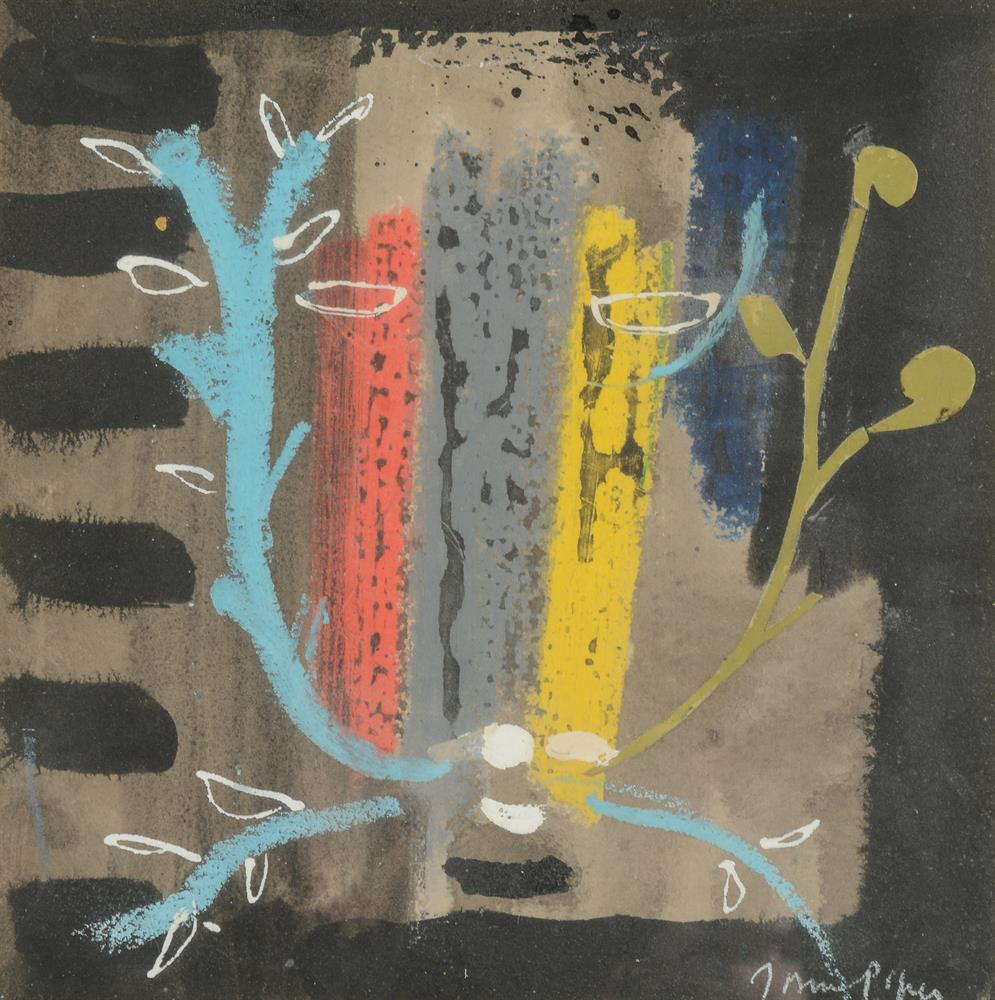
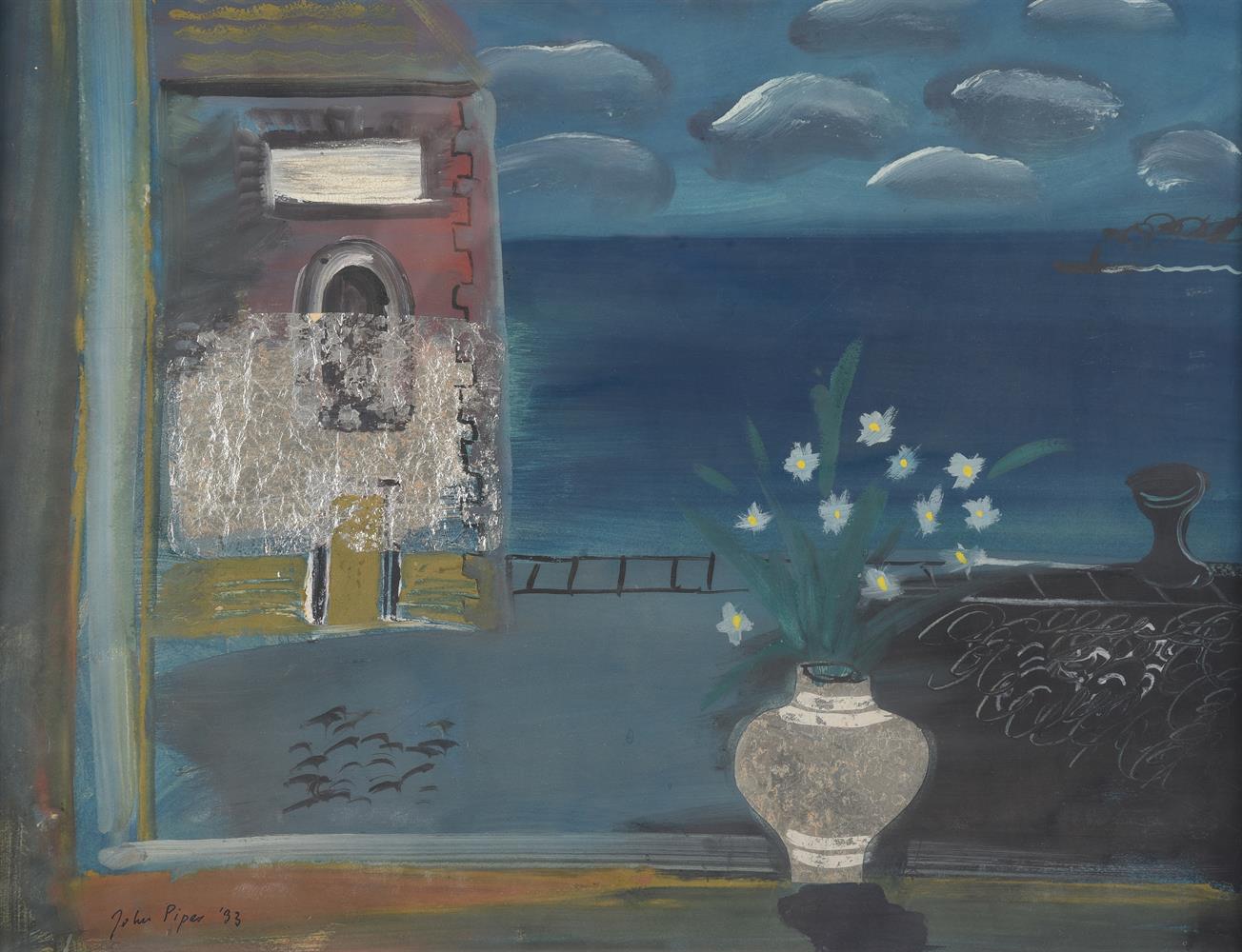
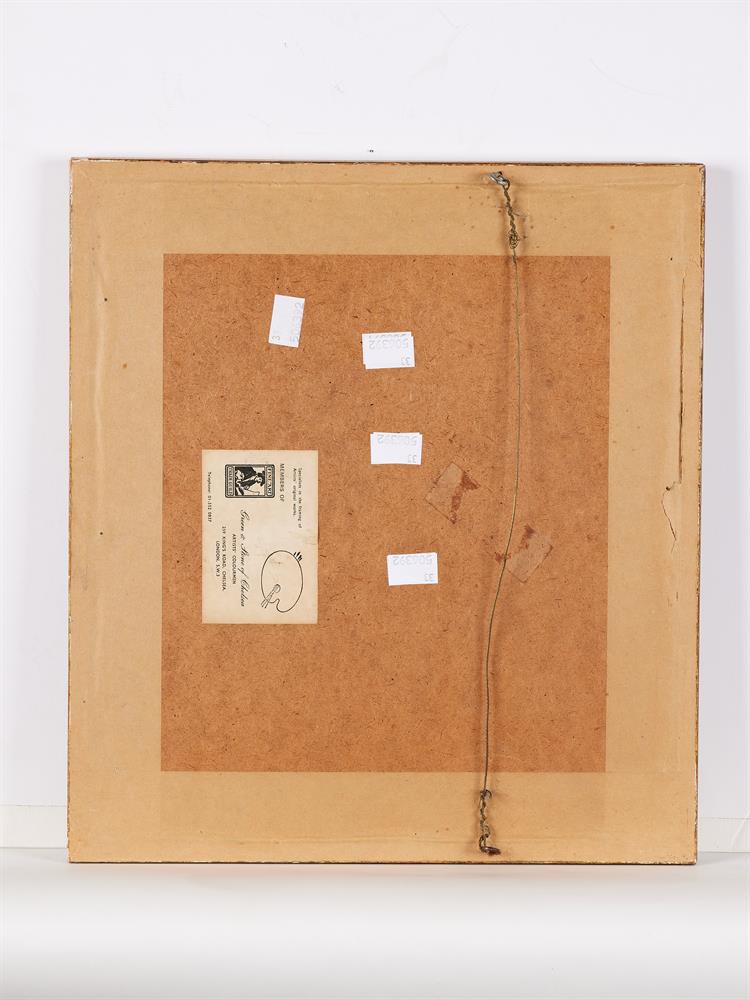
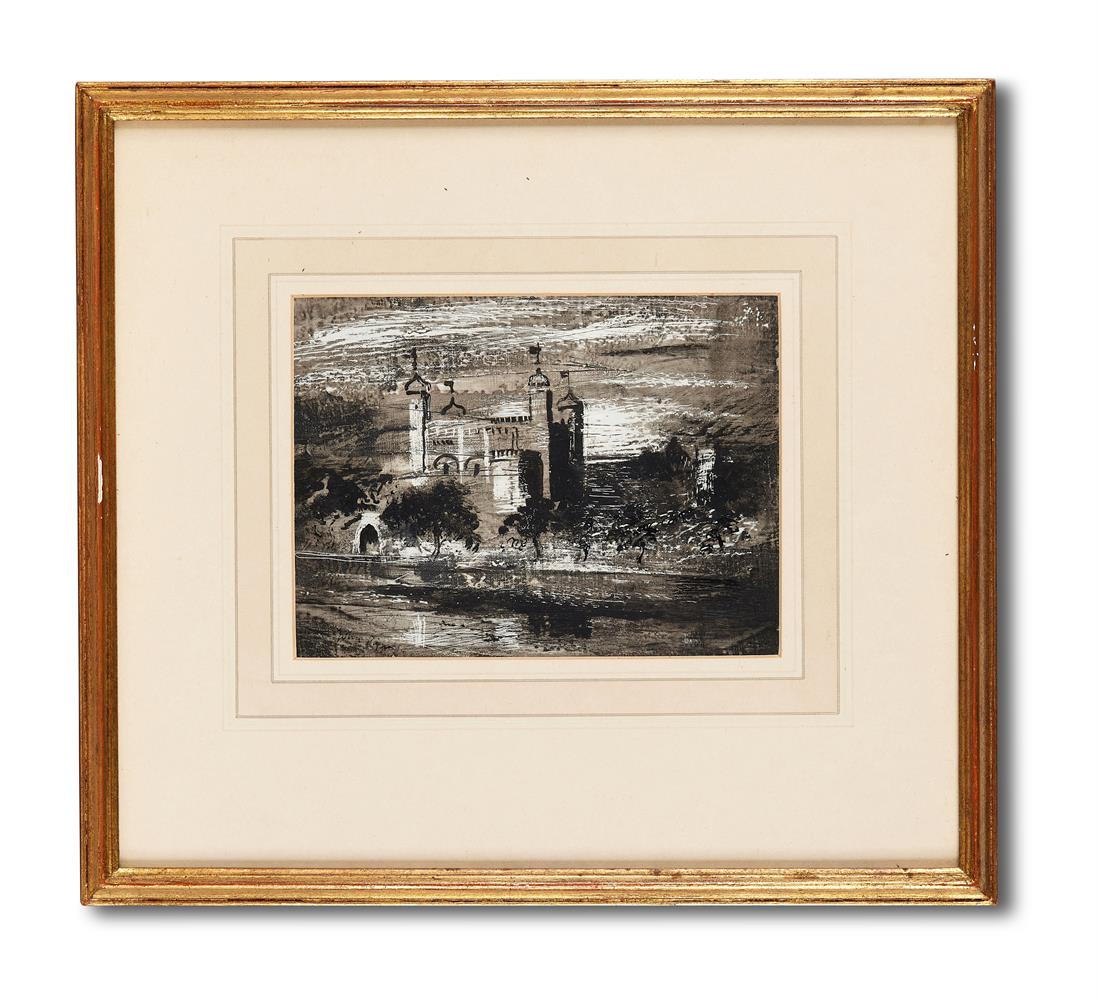










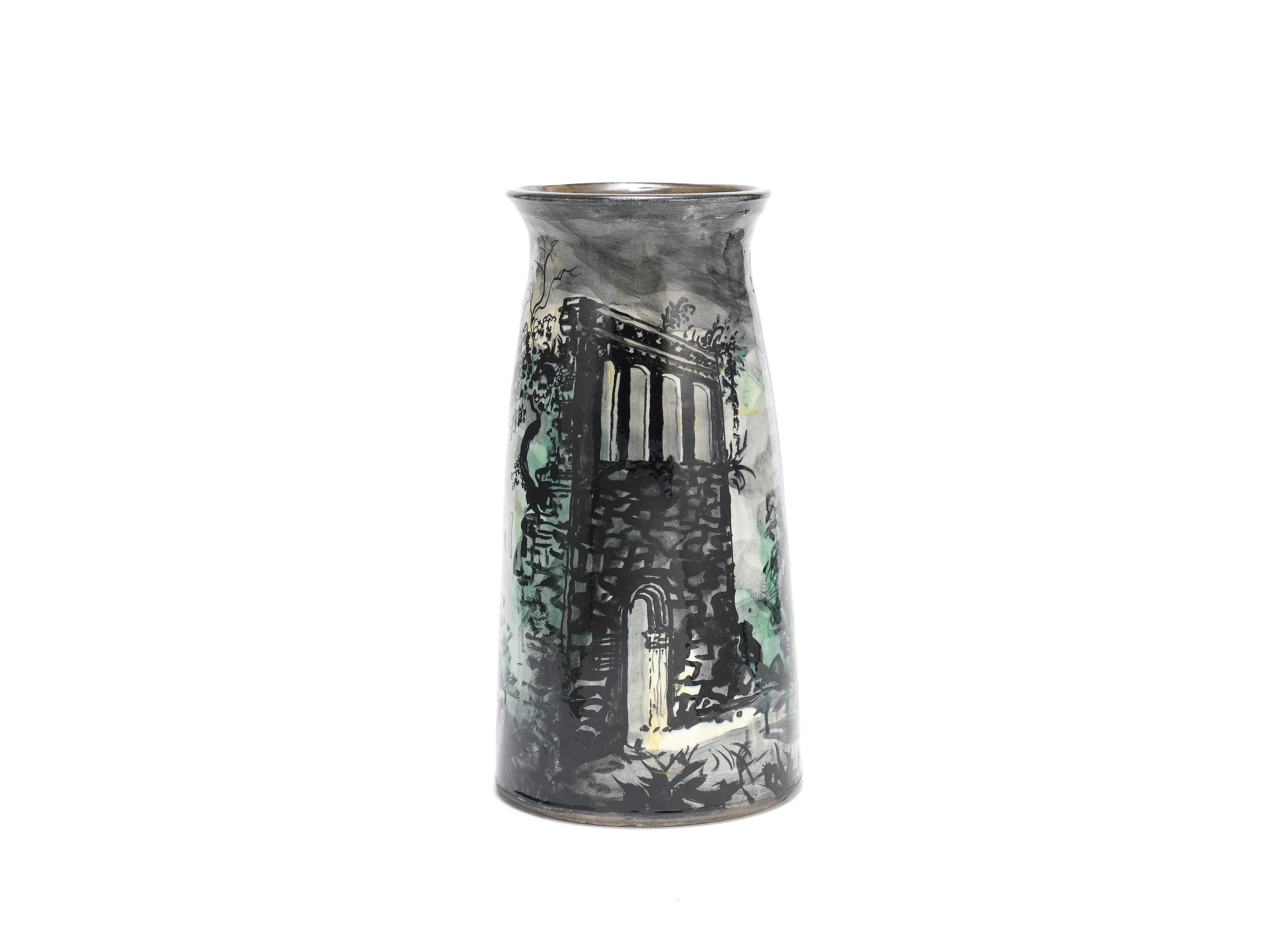
Testen Sie LotSearch und seine Premium-Features 7 Tage - ohne Kosten!
Lassen Sie sich automatisch über neue Objekte in kommenden Auktionen benachrichtigen.
Suchauftrag anlegen